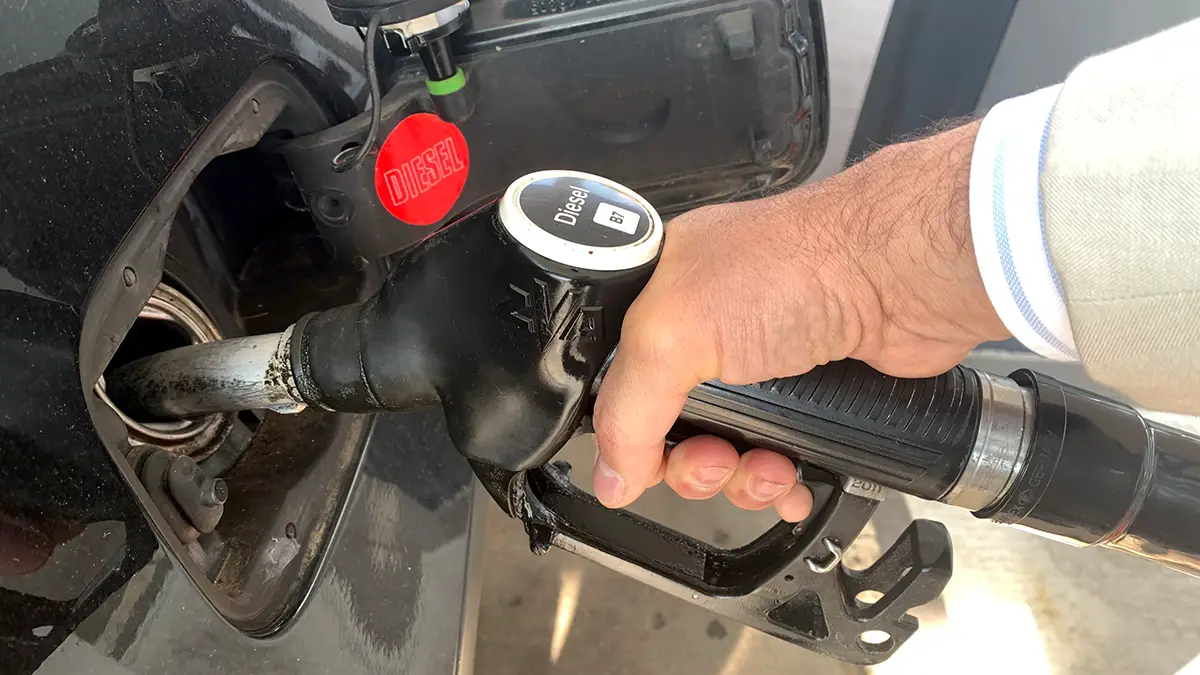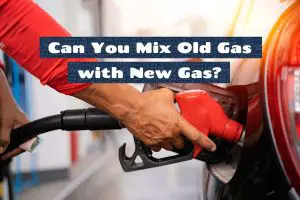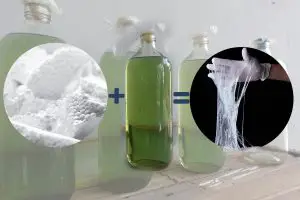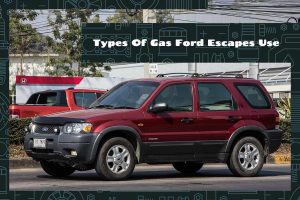Gasoline is a precious commodity, and we all want to make the most of every drop. But sometimes, in our rush to fill up and get on with our day, we accidentally overfill our gas tanks. Fortunately, there are some easy ways to tell if you’ve overfilled your gas tank.
Here are some signs that you may have overfilled your gas tank:
- Gas gauge needle past the F mark
- Fuel spillage
- Fuel smell
- Difficulty starting your vehicle
- Flashing engine light
In this guide, I’ll explain in more detail what these signs mean, the dangers of overfilling the gas tank, and what to do when you’ve overfilled your gas tank.
How to Know If You Overfill Your Gas Tank
If you’re someone who follows a standard procedure when filling up your gas tank, it’s worth questioning whether you might be overfilling it. This section will delve into the warning signs of overfilling your gas tank.
1. Gas gauge needle past the “F” mark
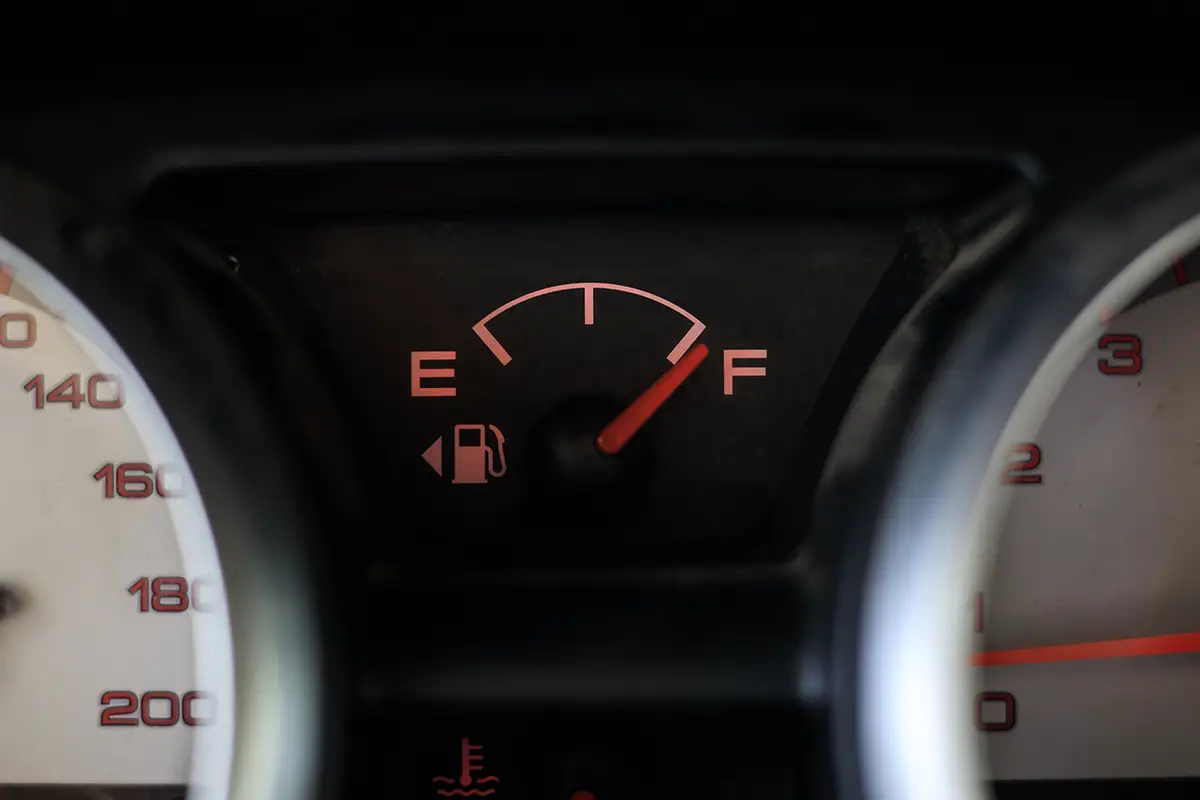
When you fill up your gas tank, you want to see the fuel gauge needle resting at or slightly below the “F” mark, which indicates that your tank is full. However, if the needle goes past the “F” mark, you have overfilled the tank.
2. Fuel spillage
Fuel spillage is one of the most obvious signs that you’ve overfilled your gas tank. When you fill up your tank, gasoline flows through the fuel filler neck and into the tank. However, if you continue to fill the tank after it’s full, the excess gasoline has nowhere to go, so it spills out of the tank and onto the ground or your vehicle.
Fuel spillage is not only wasteful and potentially harmful to the environment, but it can also be a safety hazard. Gasoline is highly flammable, and spilled fuel can ignite if it comes into contact with a spark or other source of ignition.
3. Fuel smell
When the gas tank is overfilled, the excess gasoline can leak out of the tank and onto other parts of your vehicle, such as the fuel lines or charcoal canister. This can cause a strong gasoline smell inside and outside of your vehicle. Not only is the smell unpleasant, but it can also be a health hazard. Gasoline contains harmful chemicals that can cause headaches, nausea, and other symptoms if inhaled.
4. Difficulty starting your vehicle
Overfilling your tank can cause the gasoline to enter the engine’s combustion chamber, which can cause a range of problems, including difficulty starting your vehicle. This is because the excess gasoline can flood the engine, making it difficult to ignite. In some cases, the engine may turn over but not start, or it may start but run roughly or stall out.
5. Flashing check engine light
Excess gasoline can enter the emissions system, which can trigger the check engine light to flash. This is because the fuel vapor recovery system is designed to capture fuel vapors that escape from the gas tank and prevent them from entering the atmosphere. When the tank is overfilled, the excess gasoline can overwhelm the system, causing it to malfunction and triggering the check engine light.
Dangers of Overfilling Your Gas Tank
While it may be tempting to squeeze in a few extra drops of gasoline into your gas tank to avoid having to fill up as frequently, overfilling your gas tank can lead to a range of dangers. From fuel spillage and emissions system damage to engine problems and safety hazards, overfilling your gas tank can cause significant issues that can lead to costly repairs and even endanger your safety.
1. Damaged emissions system
The emissions system is a vital part of the vehicle that collaborates to reduce the amount of harmful pollutants discharged by the engine. It involves various components, including the oxygen sensors, catalytic converter, and evaporative emissions control system.
If you overfill your tank, excess fuel can enter this system, making it malfunction and release pollutants into the atmosphere. This can be harmful to both people and the environment.
2. Engine damage
When your gas tank is overfilled, gasoline may flow into the engine’s combustion chamber and mix with the air in the fuel mixture. This can cause the engine to perform poorly, misfire, or come to a complete stop.
Furthermore, too much fuel can dilute the engine oil, decreasing its lubricating abilities and causing quicker wear on engine components. Overfilling the gas tank can result in disastrous engine damage, including cracked cylinder walls, bent connecting rods, or even a seized engine. It’s crucial to avoid overfilling the tank to prevent such serious and expensive damage to your vehicle.
3. Safety hazard
Gasoline can spill out onto the ground or other parts of your vehicle, which can be a fire hazard if it comes into contact with a spark or other source of ignition. In addition, the strong smell of gasoline can be harmful if inhaled for an extended period of time, leading to symptoms such as headaches, dizziness, and nausea.
How to Avoid Overfilling Your Gas Tank
Overfilling your gas tank can cause a range of issues as described above, but luckily, there are several simple steps you can take to avoid overfilling your gas tank and keep your vehicle running smoothly and safely.
1. Read the gas gauge
The gas gauge displays the fuel level in your gas tank, indicating when it’s time to refuel. It may also have markings, such as a full, half, or quarter tank, indicating how much fuel is left. By checking your gas gauge and refueling before the fuel level gets too low, you can avoid overfilling your gas tank and keep your vehicle running smoothly.
2. Fill up slowly
Refueling at a leisurely pace not only helps you keep a closer eye on the fuel level but also minimizes the risk of overfilling and the potential dangers that come with it. Keeping an eye on the pump’s automatic shut-off is also key to avoiding spills.
The automatic shut-off feature is in place to prevent fuel from overflowing and creating a hazardous situation. However, if you attempt to add more fuel after the pump shuts off, it can result in a messy and dangerous overfill.
3. Use a funnel
Using a funnel is a smart choice when filling up your gas tank. This tool not only helps control the flow of fuel but also makes it easy to add fuel slowly and safely. It’s especially useful when filling up smaller tanks or when using a gas canister.
Filling up with a funnel allows you to add fuel more accurately, reducing the risk of overfilling and the associated hazards. Additionally, a funnel can help prevent fuel from splashing back, which can be both messy and hazardous. Overall, using a funnel when filling up your gas tank can make the process safer, cleaner, and more efficient.
How Much Gas to Add to Your Gas Tank
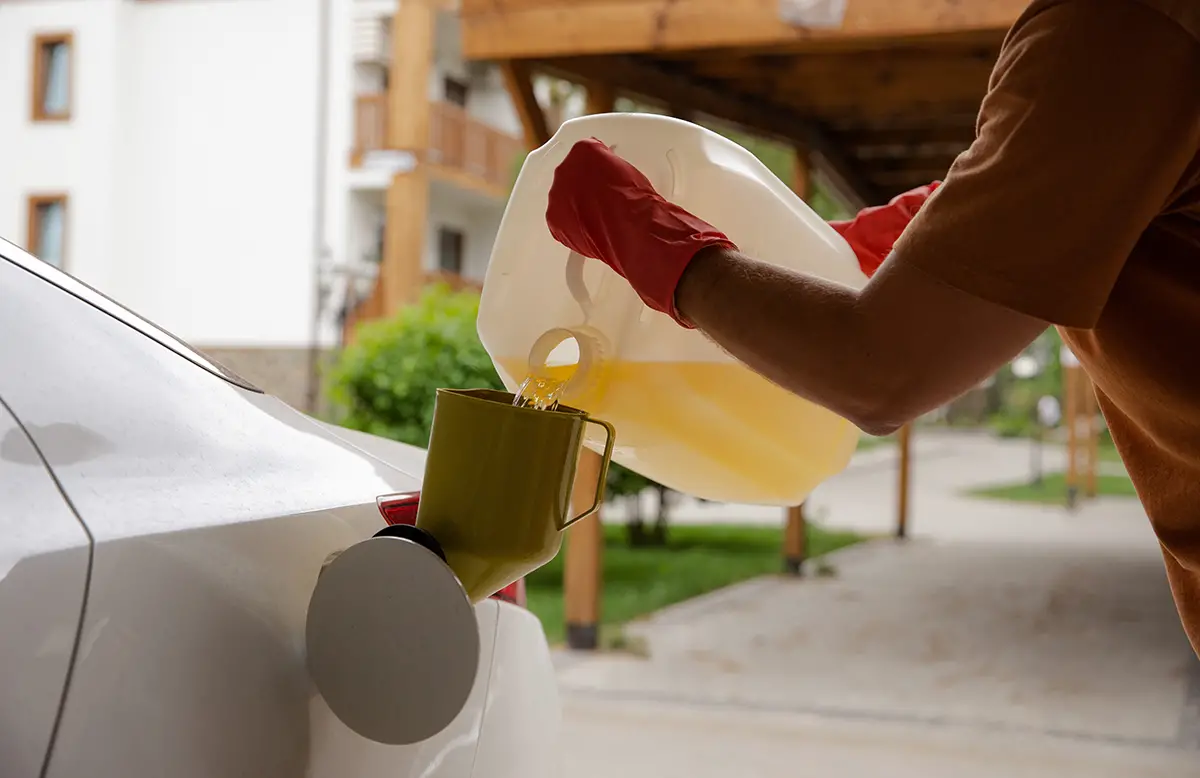
The ideal amount of gas to add to your tank is determined by multiple factors such as the size of your tank, the current fuel level, and your vehicle’s fuel efficiency. As a general rule, it’s best to aim for a fuel level that’s between a quarter to halfway full, rather than attempting to fill it to the brim.
Your vehicle’s owner’s manual can be a useful source of information to help you determine the ideal fuel capacity for your gas tank and how much fuel to add. By following the recommended fuel level, you can avoid the risks associated with overfilling your gas tank, such as engine damage and safety hazards.
